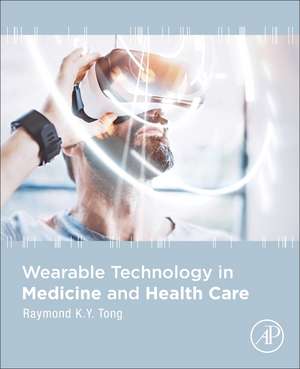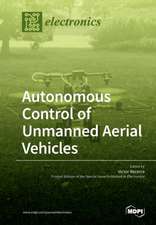Wearable Technology in Medicine and Health Care
Editat de Raymond K. Y. Tongen Limba Engleză Paperback – 27 iul 2018
- Provides state-of-the-art coverage of the latest advances in wearable technology and devices in healthcare and medicine
- Presents the main applications and challenges in the biomedical implementation of wearable devices
- Includes examples of wearable sensor technology used for health monitoring, such as the use of wearables for continuous monitoring of human vital signs, e.g. heart rate, respiratory rate, energy expenditure, blood pressure and blood glucose, etc.
- Covers examples of wearables for early diagnosis of diseases, prevention of chronic conditions, improved clinical management of neurodegenerative conditions, and prompt response to emergency situations
Preț: 689.71 lei
Preț vechi: 757.93 lei
-9% Nou
Puncte Express: 1035
Preț estimativ în valută:
131.97€ • 138.16$ • 109.20£
131.97€ • 138.16$ • 109.20£
Carte tipărită la comandă
Livrare economică 29 martie-12 aprilie
Preluare comenzi: 021 569.72.76
Specificații
ISBN-13: 9780128118108
ISBN-10: 0128118105
Pagini: 340
Dimensiuni: 191 x 235 mm
Greutate: 0.59 kg
Editura: ELSEVIER SCIENCE
ISBN-10: 0128118105
Pagini: 340
Dimensiuni: 191 x 235 mm
Greutate: 0.59 kg
Editura: ELSEVIER SCIENCE
Public țintă
Research Engineers working on wearable medical technologies, Biomedical Engineers, Biomechanical Engineers, and Electrical Engineers.Cuprins
The book will be organized into several sections that cover key aspects of wearable technology and its clinical and biomedical applications. The authors will invite the world’s experts to present their unique view of the field.
Section 1 – Introduction to Wearable Technology provides an introduction and overview of the design and advances of wearables, and discusses main applications and challenges that drive development of wearable systems for clinical and biomedical uses.
Section 2 – Wearables for Health Monitoring focuses on some examples of wearable sensor technology used for health monitoring, such as the use of wearables for continuous monitoring of human vital signs, e.g. heart rate, respiratory rate, energy expenditure, blood pressure, blood glucose etc.
Section 3 – Wearables for Disease Management focuses on some examples of wearable sensor technology used for disease management, such as the use of wearables for early diagnosis of diseases, prevention of chronic conditions, improved clinical management of neurodegenerative conditions and prompt response to emergency situations.
Section 4 – Wearables for Rehabilitation focuses on some examples of wearable sensor technology used for rehabilitation, such as use of sensors for muscle strengthening, and use of wearable exoskeleton to achieve upper limb and lower limb rehabilitation for patients after stroke or with other motor impairments.
Section 1 – Introduction to Wearable Technology provides an introduction and overview of the design and advances of wearables, and discusses main applications and challenges that drive development of wearable systems for clinical and biomedical uses.
Section 2 – Wearables for Health Monitoring focuses on some examples of wearable sensor technology used for health monitoring, such as the use of wearables for continuous monitoring of human vital signs, e.g. heart rate, respiratory rate, energy expenditure, blood pressure, blood glucose etc.
Section 3 – Wearables for Disease Management focuses on some examples of wearable sensor technology used for disease management, such as the use of wearables for early diagnosis of diseases, prevention of chronic conditions, improved clinical management of neurodegenerative conditions and prompt response to emergency situations.
Section 4 – Wearables for Rehabilitation focuses on some examples of wearable sensor technology used for rehabilitation, such as use of sensors for muscle strengthening, and use of wearable exoskeleton to achieve upper limb and lower limb rehabilitation for patients after stroke or with other motor impairments.














